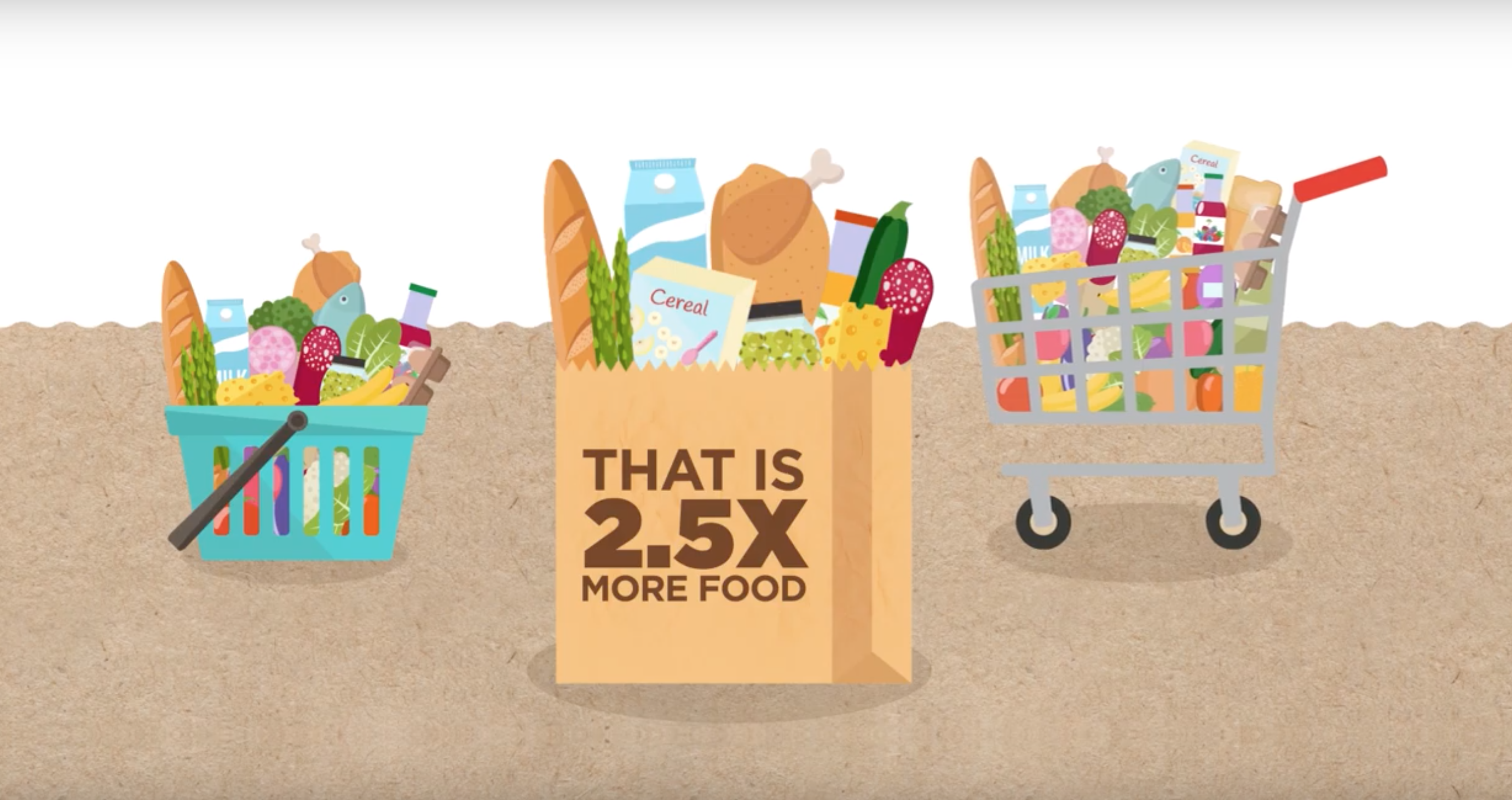Until a few years ago, Gleaners Food Bank of Indiana was like most food banks in its reluctance to say no to any and all offers of food. So it might send a truck to a third-grade classroom 20 miles away to collect half a dozen bags of shelf-stable groceries, despite the expense and inefficiency of making such a trip.
Not so anymore.
Gleaners is pursuing a strategy that spares no room for unproductive activities. Under the plan, it will more than double the amount of food it distributes to 60 million-plus pounds, while also bringing down the cost per meal by two-thirds, from 39 cents to 13 cents. The ultimate goal, which it hopes to achieve by 2023, is to fill in the 53 million meals being missed annually by about 300,000 people in Gleaners’ 21-county service area. And it wants to close that meal gap with healthier, fresher food.

Getting to those goals will require Gleaners to refine what it’s been doing for the past 40 years, while also adopting new perspectives, said John Elliott, who became President and CEO three years ago, after working at The Kroger Co. for about ten years and also serving on Gleaners’ board. “Getting to the lowest cost per meal is an attitude change,” Elliott said. “We can’t close the meal gap by assuming donors will give us two and a half times more donations, so we have to be much more efficient with every dollar entrusted to us.”
Gleaners already has a head start on executing its plan, which was approved by the board in February and officially funded in August. Over the past two years, it has improved its operating efficiency by 60%, providing 4.1 meals per dollar, up from 2.4 meals. A constellation of small changes across its entire system has contributed to the improvement, from streamlining warehouse operations, to emphasizing virtual food drives, to being more deliberate about justifying every mile driven by its fleet of trucks. “We’ve taken much more of a corporate-efficiency, cost-cutting approach to every single task and business function at Gleaners,” Elliott said.
To achieve its 2023 goals, Gleaners plans to become less dependent upon the non-perishable food given to it, and strive for greater efficiency in amassing fresh food. Central to that strategy is its participation in Feeding America’s network of regional produce cooperatives. Gleaners is one of six food banks that have recently been tasked with overseeing processing facilities that receive large amounts of surplus produce from regional farmers and distribute it to local food agencies.
As one of the coops, Gleaners shipped just short of 15 million pounds of fresh produce in 2018, up from zero before May 2017. About half of that went to agencies in Gleaners’ service area, while the rest went to nine other food banks in the region. Gleaners expects it can dramatically reduce its cost of shipping produce, currently at 16.5 cents a pound, by working with other organizations that also have trucking needs to get the best possible fleet pricing. “In most cases, transportation is the largest component of delivering produce,” Elliott noted.
Gleaners is also building upon its growing relationships with farmers to develop new sources of protein and dairy. As with farmers who plow under surplus produce, meat producers often freeze large portions of excess meat before eventually throwing them away. In a small pilot, Gleaners is paying a processor to package excess chicken into small bundles, rather than freeze it in a big block, allowing Gleaners to source the meat at about 25% to 30% of the wholesale cost.
As it adds efficiencies, Gleaners is also striving to strengthen and diversify its donor base, emphasizing longer-term, multifaceted relationships. Not surprisingly, the food bank’s enhanced focus on fresh produce is striking a chord with potential new donors who recognize the strong connection between hunger and public health. Two of the four largest hospital systems in Indiana were the first to contribute to the pilot of the produce cooperative, Elliott noted. “They immediately saw the potential impact,” he said.
Reducing food insecurity to improve public health is where Elliott personally would like to see Gleaners make the most progress, he said. Doing so would provide financial dividends not only for the food bank, but also the state of Indiana, which faces additional healthcare costs of more than $1 billion because of food insecurity, Elliott said. “We could close the entire meal gap for less than one-fourth of that,” he said.
If you’ve learned something useful to your hunger relief work today, then please donate to Food Bank News. Your donation will be doubled between now and the end of the year!













